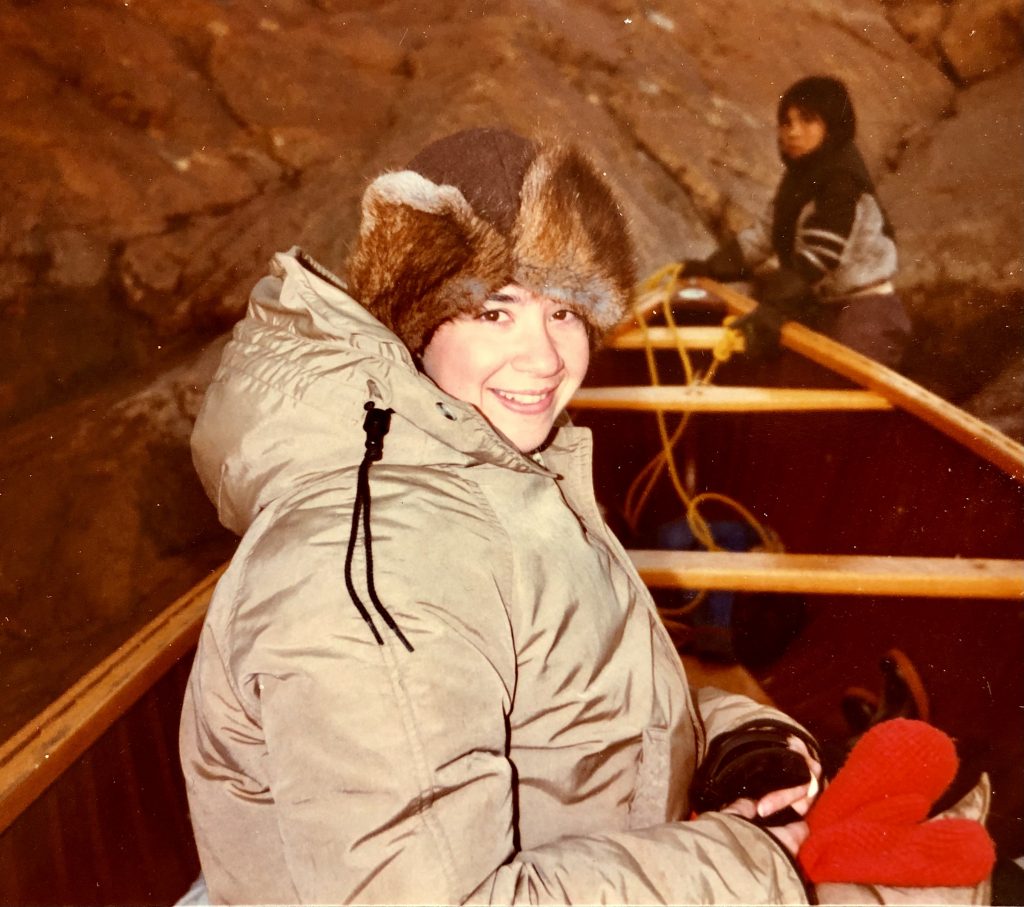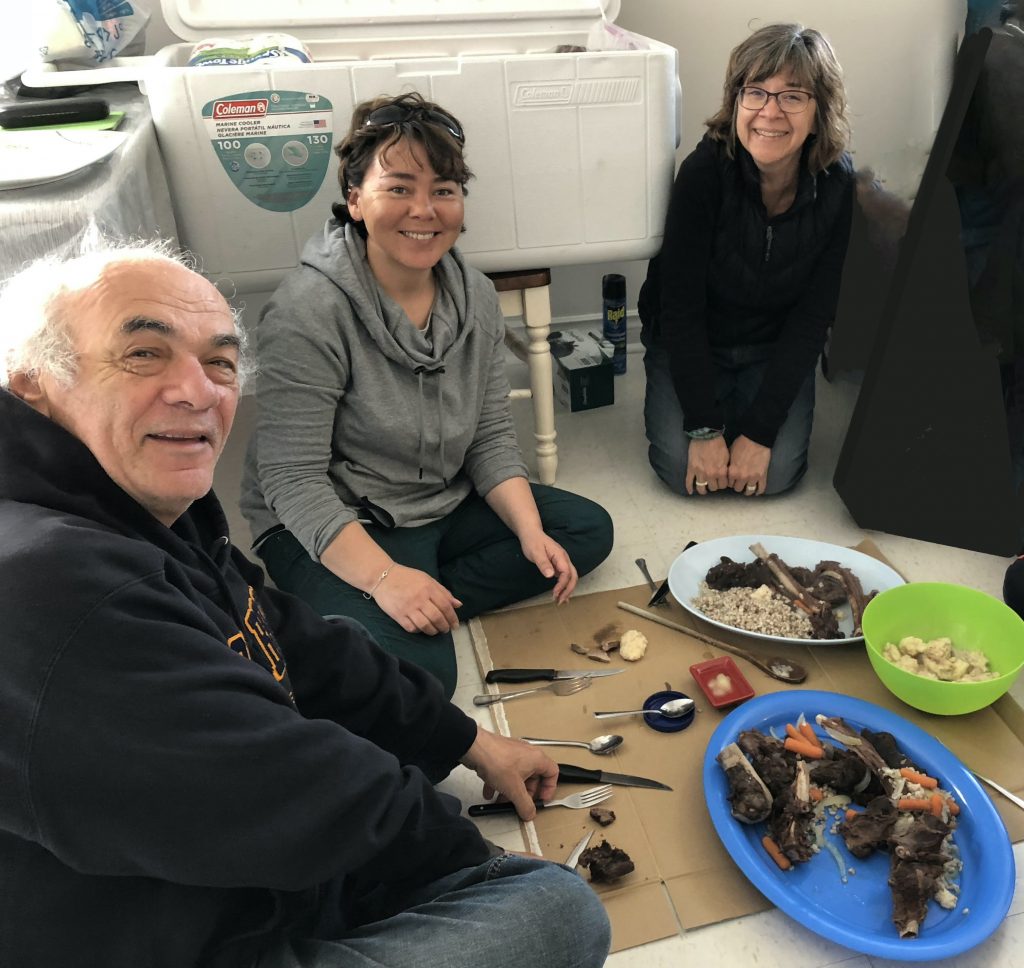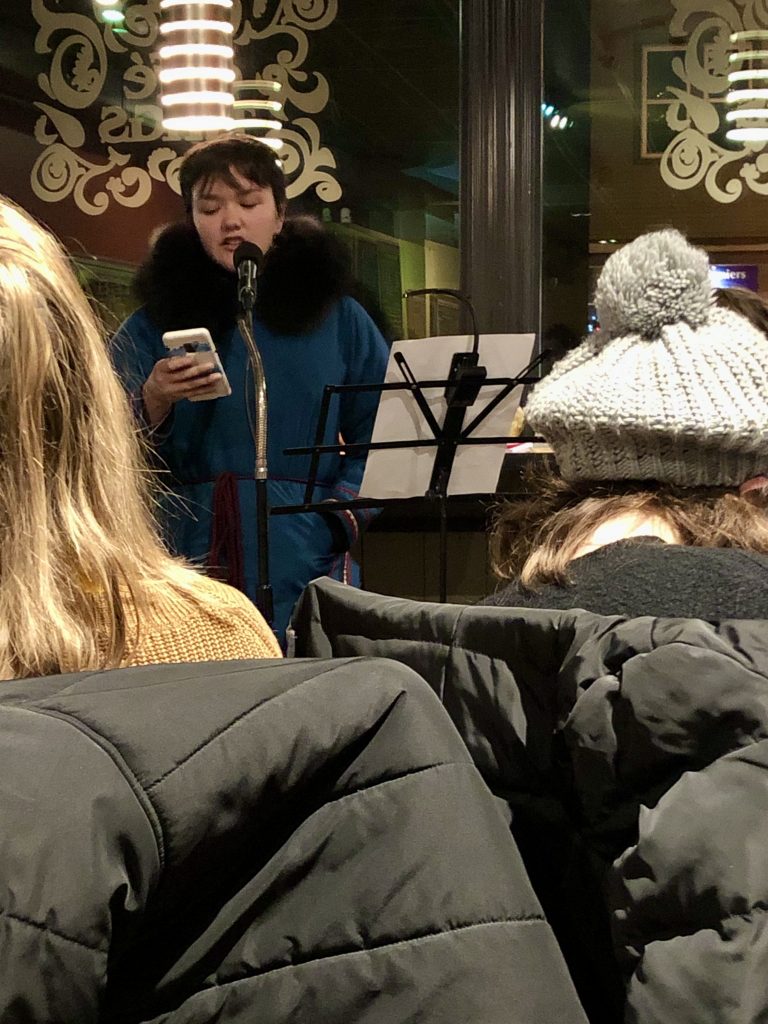The November Issue 2022 Teachers
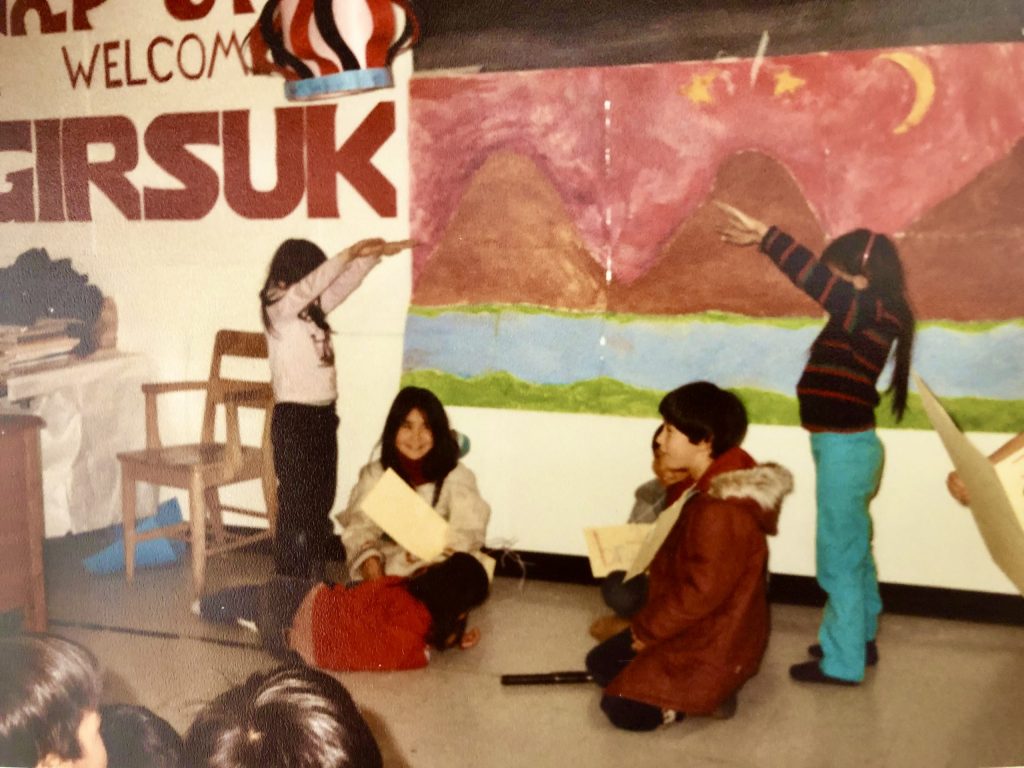 Letter from the Editor
Letter from the Editor
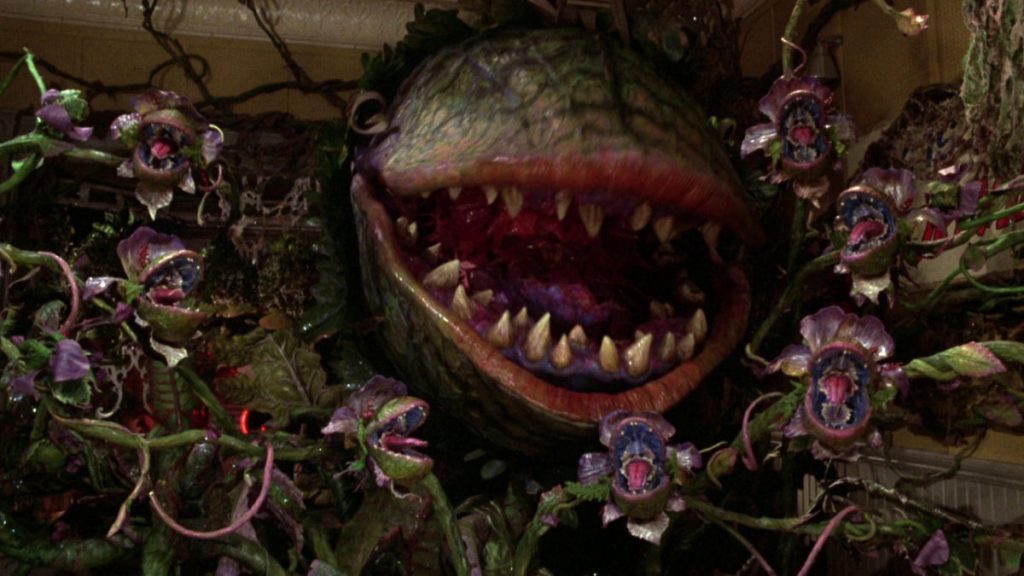 Little Coffeeshop of Horrors
Little Coffeeshop of Horrors
 My Nunavik Experience
My Nunavik Experience
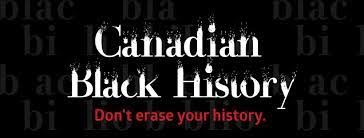 Dr. Dorothy W. Williams & Blacbiblio.com
Dr. Dorothy W. Williams & Blacbiblio.com
 Sunday Evening Documentary
Sunday Evening Documentary
 Edward He interviews Melissa White
Edward He interviews Melissa White
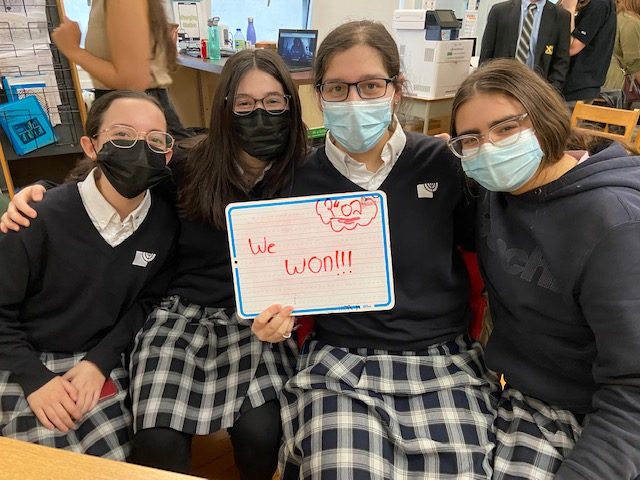 Battle of the Books
Battle of the Books
As well as working as the Editor of Font, I’m lucky enough to occasionally visit secondary schools around Quebec engaging young people in poetry and spoken word. It has been a wonderful way to see the province, and to meet those teachers who work so hard, often unseen, to open up literature and creative writing to their students: sowing the seeds for our future writers and artists. It felt like a natural extension of Font‘s mandate to give them an opportunity to share their experiences and reflections on educating Quebec’s young people, past, present, and for the future.
Thus we have contributions from Nunavik, Abitibi-Témiscamingue, Haut-Saint-Laurent, Kahnawá:ke, and the Laurentides. In Montreal, Zehava Cohn from the Hebrew Academy talks about engaging pupils in the Battle of the Books, and Font’s copy editor Edward He interviews one of his previous teachers, Melissa White at Collège Jean-de-Brébeuf. Plunging deeper into questions of curriculum and culture – what is included, and what is not – Dr. Dorothy W. Williams talks about the extraordinary Blacbiblio.com project, dedicated to putting Black Canadian History on the syllabus, while Curran Katsi’soró:kwas Jacobs and Kimberly Hardy discuss decolonizing the classroom, teacher attrition in Quebec, and what it means to be an educator today.
It is a pleasure to give a platform to these passionate, articulate, dedicated people. We hope that you enjoy.
What does it mean to be an educator?
Teachers and friends Kimberly Hardy and Curran Katsi’soró:kwas Jacobs sat down together to discuss the state of education in Quebec, covering topics from decolonizing the classroom to teacher attrition (new English-language teachers in Quebec move careers after an average of three years), to approaches to culture, pedagogy, the canon, and teaching literature. The following has been edited for clarity.
*
DECOLONIZING THE CLASSROOM
CKJ: People hear me saying we need to decolonize and they think that that’s just an Indigenous thing. But it’s not. So here’s my question for you – what do you think it means?
KH: Every textbook that’s created, every story that’s written, every story that we choose for kids to read has been written by someone in a certain time from a certain social context. Decolonization for me means developing those critical thinking skills that make anyone, whether it’s a student, a teacher, everyday citizen, going about their lives, taking in content wherever it is, understanding that someone has created a construct. It means removing the layers of bias, whether it’s the bias of privilege, the bias of race. In the classroom, making [students] aware that they’re being presented with a construct and asking how can they deconstruct that?
CKJ: Colonialism was the construct. That’s the bigger picture, and when you look at Canada and even the education system, the way it is within this country, that is a product of colonialism.
It’s refreshing for me: I wanted to hear you say it because I tell people all the time. I say when a non-Native person says something … not that people will listen more but when they can hear you, they’re able to filter something that I am saying all day, every day, through your lens and that it makes it more applicable.
I think that one of the challenges about this concept of decolonization is people not understanding how are colonial constructs still appearing in our schools? Have you looked at our schools? It’s been exactly the same way forever. The most concrete example I can think of is the way we set up our classrooms.
KH: I’m so glad you brought this up. I’m reading this book about defronting your classroom. The teacher’s at the front, and the desks are over here, and the notion is I’m the expert and y’all are going sit and listen, and that’s hot garbage. And I say this in my 21st year of teaching.
I’m always saying to the kids, I’m your last line of defence. You gotta go to each other first. How do you mobilize knowledge within yourselves? Because you’ve got it. There’s knowledge there. I will be your guide on the side, but what’s so sad, Curran, is they don’t believe that they know anything about anything.
CKJ: I see the same things. I see flexible seating happening, but I still don’t see the engagement of trying to shift that culture. When I set out my classroom with my student teachers, they still talk to me. You guys are literally facing each other and sitting next to each other, but you’re still directing your conversation at me.
KH: Decolonizing happens over the process of a lifetime, right? It’s not one teacher’s job. It’s inside the school, outside the school. What are the kids being exposed to? What is the adult being exposed to? How are they broadening mindsets, how are they rethinking?
CKJ: The unfortunate but not so unfortunate part about our work, which is exciting but also exhausting, is that we’re trying to change that experience for our students. But when you’re the only one and I’m not saying that you’re the only person in your whole school, but when you’re one of the few, it’s marching a lonely road.
TEACHER ATTRITION
KH: The research in our province showed that new teachers would stay in their career for up to five years and then they moved on to something else. As of four or five years ago, that expectancy is three years.
If you’re feeling isolated in your beliefs about how a classroom is set up, it takes a really brave person to go to someone else and be like goddammit, this is not working, and we need to change this and will you help me and can we plan things and how do we shift mindsets—that takes a really brave person and if you’re a young person aged twenty-four?
CKJ: When I was doing my MA, I took a [Master’s] course at McGill. I was in this class with other students who had no classroom experience, who had just come from their Bachelor’s degree and were like, this is what my classroom is going to be like. I was already teaching for four years at that point, and I was headstrong in university, I asked a lot of questions, and I fought that system day in and day out because I was asking, what’s going on here?
I didn’t want to dampen their excitement. I’m like, OK, they have this light. How can I support them to continue to build that fire? Because that’s what you need in order to be able to succeed beyond the one to three years. You need to understand that it is an upward battle, but it is not impossible … to do the things that you want to do. You do have to be brave. You have to be steadfast, because you’re going up against a one hundred year old system.
I also had people when I was a student … they were excited to go in, to continue to perpetuate the system the way it was. And I know that they are now successful teachers in the sense that they have careers where they fit right into the school and are, you know, are doing the same things that people have always been doing.
CURRICULUM, CANON & LITERATURE
KH: So many teachers, young pre-service teachers, but also lifers, believe that they are bound to certain texts or curriculum. Of course you’re bound to curriculum. It’s the legal job. You have to teach the curriculum…
CKJ: … but you’re not bound to pedagogy.
KH: You’re not bound to pedagogy or teaching strategies. We have this phenomenal curriculum here in Quebec. We don’t have a canon, like they do in the US. We have so much freedom and with that freedom comes a great burden. What are you choosing to do? Are you choosing to have them sit down and write chapter summaries? How is that pushing that child’s thinking forward?
CKJ: A lot of times, you have to choose from the cupboard. There’s always ways around that.
KH: Because you can put things in the cupboard.
CKJ: One of the most eye-opening things … I got to teach graphic novels, and encourage students to express themselves through images. I [taught] a 10th grade ELA class where they were able to do this visual reading, which is a form of literacy. Who’s to say that literacy is just reading the words on the paper? You want to talk about decolonizing literacy? There’s so many forms of literacy.
Our youth, our students, are way more literate in things than we even know. There are other forms of multi-literacies that we can tap into. That was really interesting, particularly because I taught that in a Northern community. That was an experience of meeting a population where they are, and having to support them, to see themselves in what they’re reading and what they’re doing. How am I gonna teach a prescribed book from the canon to a bunch of kids who, if they don’t want nothing to do with you, they’re just not gonna come to school?
I also [worked with] a lower grade level, coming to a population of kids whose reading levels were not where they’re supposed to be, and using graphic novels was again an opportunity to have kids feel uplifted in their ability to read, because now the kid who couldn’t decode words on paper was able to tell me what was happening in a story because he was able to decode the images in the book that we had. And for the first time, he was reading a book because it had pictures.
If we are only focusing on very specific things that kids are supposed to be reading, then we are not doing our job at accommodating the different types of learners who are coming into our space. Not just in terms of learning differences, but also cultural and life experiences. We’re seeing kids for who they are as a person. And we’re going meet them there. What a concept.
KH: In my classroom, I do independent reading. I only do class novels once a year for one book, and that concept alone for kids “You mean I can read what I want?” That blows their minds. This is so sad. It’s grade 8. And you haven’t been taught that you can read whatever you want. This is your world.
Then there’s the other concept: they’ll start a book. I’ll notice that that it’s not moving along and I’ll say “You want to switch books?” Yes, you can change your mind. There is not enough time in the world for you to be stuck on something you hate. Let’s go. Oh wow. Let’s move on to something we love and feel that thrill.
We’re always choosing like what we put in their hands, what we put in their minds, what they choose to put in their mind.
CKJ: With that sadness comes triumph because you’re like, OK, I am making a difference. You’re making a difference because you’re being a person and you’re letting them know that it’s OK for them to to put things down and to try again and to be a human. That’s the best quality for anybody who is an educator is that they can see their students for the people that they are. That they can accept that and work with that.
That’s when I think maybe we need to reevaluate. What does it mean to be an educator?
I have a lot of strong opinions about what I think a good educator is. But I’m in agreement with you that we are overworked. And we are tired. I understand. Listen, I’ve handed out my own worksheet because you just gotta get through the day sometimes, you know. But I like to think the bigger philosophy that I tried to uphold is really just being a person with people. That’s whether they’re whether they’re five or in their fifties.
ADULT EDUCATION
CKJ: I wish that everybody had the opportunity to work in Adult Ed. Especially as a high school teacher, because there’s nothing more humbling as a person when you are the teacher of somebody who [has] seen more of the world than you. I think it really puts you in your place when you realize that you are not above somebody, but you are able to meet them where their needs are. Someone has lived a life, has kids, has done all kinds of things, but they never finished high school because that system just didn’t work for them. So now they’re here, and they’re genuinely ready to learn from you. Doesn’t matter if they’re ten years older than you or thirty years older than you.
So I’m going to listen to what they have to say, and it’s very humbling because it really puts into perspective that you are not the master of knowledge, that the teacher isn’t the person that knows everything. I don’t know everything, but I can teach you how to write really good sentences and how to analyze literature, because that’s what you need to do for this. It’s an amazing experience.
KH: Maybe I’ll make a career change. Oh, we’re gonna get a bell in here. Sorry about that.
CKJ: That’s OK. You work in a school. That’s the way it goes.
KH: Right. It’s my life. It’s my life.
Failed Elegy of the Original Order
When I was in high school, I really loved the idea of being an English Language Arts teacher. When I was young, I would sit my sister down in our basement and scribble rememberings from my days at school onto our hand-me-down whiteboard. I would help her sound out words and teach her how to add. My sister wasn’t old enough to learn these things yet, at least according to the system, but in the School of Curran, I just treated her like my teachers treated me. I knew at a very young age that I wanted to be an educator, but I also know the girl teaching in the basement couldn’t even imagine where she’d end up today.
I had the bright idea to try my hand at poetry. I’ve been using poems and song lyrics to teach my pre-service teachers once a week, and I just finished raving about the beauty of pulling meaning from metaphor, so I thought writing an elegy for my younger self would be a good way to show my journey as an educator. So I started reading about poem structure, and looked for words that rhymed. I put my headphones on and chose a playlist of instrumental film soundtracks so I could get into the headspace of the young girl who used to write. I actually had a floppy disk in my early years that I labelled in ink “CURRAN’S SECRET WRITINGS: DO NOT LOOK.”
I always loved stories. And that was what I wrote. I spend a lot of time now, encouraging my students to use stories to teach, but also as a way of designing their practice. Young Curran did these things often. She used her imagination to create worlds and predict aspects of her life. Who would she marry? What would she do for a living? Where would she travel to? Deep inside that floppy disk, they were all woven into short stories about other youth.
So I started my elegy, grieving the young girl who used to write stories. Coming to terms with growing up and realizing that the education system at its core wasn’t everything she hoped it would be. Coming to terms with the magic of learning not being shared by others. The poem started to turn to the concept of decolonization which is so present in my life now. But how could I exemplify such a complex concept in a couplet or two? Further, how can I grieve a loss when there wasn’t really a loss after all, but just a return to self?
The elegy didn’t work anymore, and a story came to my mind instead. So I am going to invite you to settle in, make yourself a tea, and spend time with this story of my experience as an educator. I will make it brief, since you know, we don’t have all day, but I’m starting to become more like my father who is just like his elders before him. Once you get them rolling, it’s almost impossible to stop them. And although I’m still a student, absorbing what I’m learning, I take pride in knowing that I’m an inheritor of stories; because I too like listening to them.
We are going to call this story “The Original Order.”
I hear that I’ve only got about three hundred more words to go, so I’m going to leave you to ponder this experience. Think with it, and wonder.
I received an email from the university where I teach, identifying my assigned classroom for the semester as a flexible seating room; meaning that the desks can be moved (thankfully, because I will die on my hill of never teaching students in rows), and each teacher is responsible for moving the desk only once. So as my students assemble our u-shape or small groups for discussion and learning, we can leave it as is, and the next group can change it however they see fit. Well, one of the teachers after me made it very clear that a) they did not see the email we received, and b) they felt compelled enough to write a note on the whiteboard saying, “please return the desks to the original order.”
So I asked my students, “what is the original order and who gets to decide that?” And as the class went on, I asked them what kind of response we should give. They were creative to say the least, understanding the implications of colonialism on the institution. But I decided to erase the board, and leave a message, short and sweet: #Landback.
Young Curran never saw this coming, the challenges of breaking a system from the inside out. But I bet she would think I was cool. And you should. Because I am you, and this is what you were meant to be.
Little Coffeeshop of Horrors


“We never did that kind of writing with Mr. W”
There is nothing like the earnest doubt of a teenager. With one simple brutally honest statement, I had been weighed, measured, and found wanting.
“Well, I’m not Mr. W, I’m Ms. Silver and I have my own way of doing things.”
It is an experience any teacher who has started at a new school and stepped into the shoes of a beloved former teacher knows well. That moment when you first start, and the kids are sizing you up as you try to win them over.
I love writing, but I came to it late in life as a hobby. I started my teaching career as a Constant Reader. I loved books and naively assumed that loving books would be all the juice needed to invigorate my ELA classroom. I gave no more than a passing thought to writing. Words were a vehicle to carry all my “deep thoughts” about the books we read in class.
Then I started to write, just silly little things here and there that I would post online. But when I started posting my fledgling stories online, still wet and squawking, I connected with a community of other writers, and I fell truly, madly, deeply in love with the author’s craft. It is a relationship that has lasted for over twenty-five years. Through good times and bad, I could always turn to the blank page, start writing, and hope that the hole in the page opens so I could fall into the world I was creating. It was like being given the ability to make magic. To create an entire fictional world that you had control over, and you got to be in charge.
I knew I had to share that feeling with my students. But how?
Wise people have said, write what you know, and I’ve adapted that motto for my class as teach what you love.
I am a horror junkie and one of the earliest ways I found to connect with my students was with the lurid and gruesome nightmares they so eagerly watched on Netflix. So, starting that October, we were going to write horror. And if they happened to learn about mood, characterization, pacing, and suspense while we crafted our spooky little offerings, well then, so much the better.
That first year was a little rocky, skepticism and despair were more likely to be expressed than cleverly written little gems of suspense. I was not above bribery. “Just write your story,” I would plead, and during the coffeehouse there will be cookies and cupcakes to gorge on when we share our narratives. Yes, like the witch in Hansel and Gretel, I lured my students into the world of writing with the promise of sweet treats and a day free of lessons to just listen to what one another had created, by hosting a coffeehouse.
And there in the darkened classroom, as we sipped our hot chocolate, the magic took hold.
Zombies, eldritch horrors, and all manner of fell beasts populated the pages of their tales. The praise was effusive and sincere. We clapped for one another and admired what we had created. We cringed delightedly when someone wrote an especially vivid bit of description. I was treating them like writers, they were starting to see themselves that way too.
Next year, the same unit and of course the coffeehouse and the kids were excited all over again. The year after, kids started asking if we were going to do it in September. The grade coming up had heard about it and was curious. Mostly, they couldn’t believe they were going to have an English class where they got to eat homemade cookies and listen to horror stories. That couldn’t possibly be educational, could it? I could see the looks flashing around the classroom when I described what we would be doing.
I’ve been teaching here at GVS for six years now, and I like to think I’ve won them over with my way of doing things. I have seen the Secondary Ones I started with, graduate and head out into the world. And I have encouraged students to see themselves as writers, maybe not all of them, but enough. I have students who enter short story contests and win. Students who post poetry online, excited to share with their community of writers. And best of all, students who write for fun, in their spare time.
All these wonderful, brave kids I am lucky to teach. Who’ve gifted me with their words and all it cost me was some hot chocolate and cookies and an unswerving belief that their words were worth hearing.
Complicated Freedom
Freedom is a big, bright, bubbly breath of fresh air.
Freedom makes her friends laugh.
She collects pens and other bits and bobs.
Freedom hates clutter, but clutter loves her.
Freedom is sometimes unsure of herself, but races headlong toward the unknown anyway.
Freedom is complicated.
Freedom relishes the quiet moments when the only sound is the wind outside.
But silence makes Freedom antsy, and she soon needs to move.
Freedom wants to know what the future holds, but is afraid of finding out too early.
Breathe, Freedom will forge the right path.
Freedom is lucky to have known love. She holds on to it tight enough to be able to let go.
Freedom is patient, but not always.
Freedom interrupts. She blurts out her thoughts, so they escape
like a waterfall during the spring thaw.
Every day, Freedom is thankful for the people in her life
because without them
Freedom is nothing.
Freedom makes lists and says them out loud.
She is disorganized, discombobulated, and delightful.
Freedom bought a Roomba.
She now wants a clean house.
But Freedom also longs for toy cars and Legos to trip over and messes to clean up.
Freedom is finding her way one day at a time.
Dr. Dorothy W. Williams & Blacbiblio.com
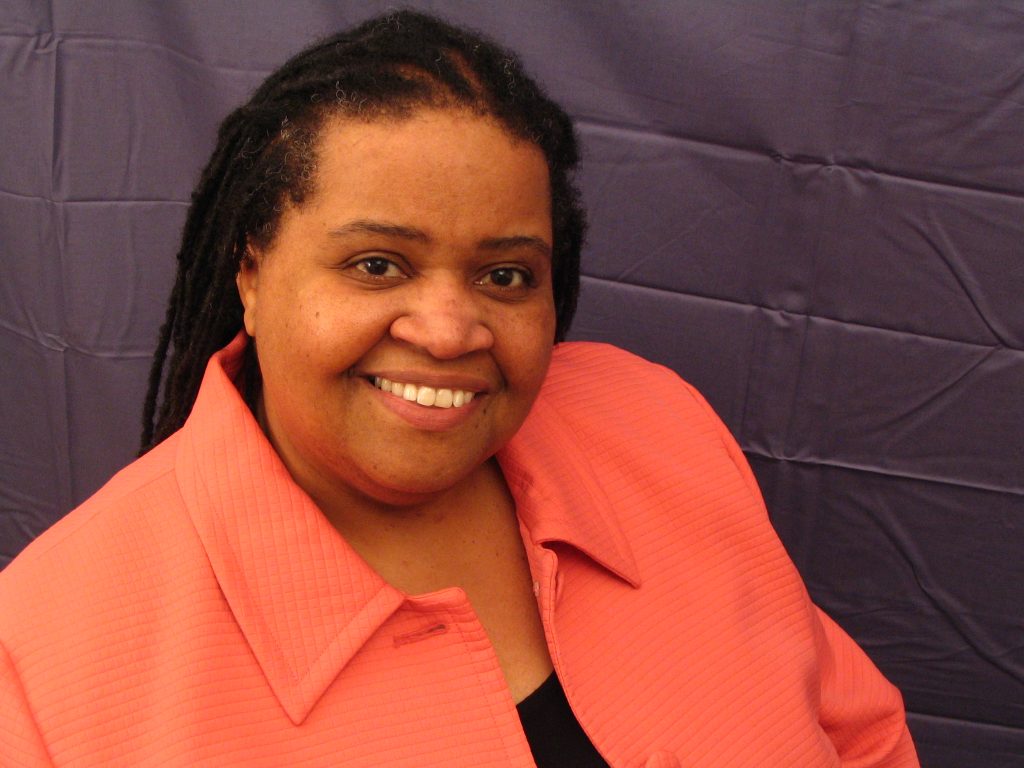

Font: Please tell us more about Blacbiblio.com. What is it? What prompted you to found the company?
I founded Blacbiblio.com in 2006 in Montreal with the goal of educating Canadians about their Black history. My original intent was to develop the field of African-Canadian studies, which at that time, did not exist. As I lectured about my books and general knowledge of Blacks in Canada, I realized we must start with our youth. I witnessed first-hand how the lack of knowledge creates inter-generational damage. My company was aware of the education gap in the K-to-12 market, that is Black Canadian history was silenced in our curriculum. In 2016, Blacbiblio.com launched the ABC’s of Canadian Black History Kit.
Can you tell us a little more about your own background and how you got here?
I grew up in the historic Black community of Montreal’s Little Burgundy.
I’ve worked as historian, educator, an author, researcher, and content consultant. I specialized in Black Canada and authored three books. For four decades I have shared a strong Afro-centric Canadian perspective, evident in my articles in journals, magazines, and newspapers. Moreover, as a trained librarian and archivist I have worked to help record and preserve our community’s documentary heritage. My passion for Black history is demonstrated in my teaching and in the myriad of public-speaking engagements in dozens of venues, from bookstores and cafés to community centres, museums, and libraries. I worked as a senior manager in several organizations and my volunteer work spans over three decades.
What was the greatest challenge that you faced?
I think the greatest challenge was just accepting the risk of being an entrepreneur. This is nothing new, for entrepreneurs put everything on the line. I was no different, however what I was trying to do was for many people, radical, strange, “not done in Quebec”. I wanted to create a business around Canada’s Black history, not a restaurant, a salon or importers. Few venture capitalists and lenders in 2006 could wrap their head around how documenting African-Canadian history could be a business. My challenge even then was to sell the idea, to help them to visualize how the promotion of African-Canadian history would be desirable, in-demand and create sustainable profits. To a certain extent this challenge remains, as I’ve realized over the years that my vision is much bigger than Canada’s financial ecosystem can visualize.
What is your greatest hope for the Blacbiblio.com project?
This is our moment. Today, we are on the cusp of long-term, sea-change. Thus, the company can not just focus on immediate survival: we aim for sustainability. Rather, Blacbiblio.com’s long term objective is to create resources for a multicultural experience, for students, teachers, academics, and researchers around the world on the historical contributions of African-Canadians and other minorities to the development of Canada. This is an exciting opportunity, a challenge my company does relish.
If you could say one thing to the ministers of education at a provincial and federal level, what would it be?
It is critical for ministries of education to prepare our future generations to live in a multilayered world of peoples, cultures, and values. These compete on a micro and macro scale. Our citizens today need to be readied for tomorrow. Education ministries need to help our youth understand multiple realities and how these can be integrated and adapted to our Canadian values. Expanding the Canadian narrative beyond a Euro-centric biculturalism will be vital. Indeed, this is already happening as we as a nation seek to understand the deleterious impact we have had on First Nations. Black contributions and historical impact too must be acknowledged.
What is the long term vision or objective for Blacbiblio.com?
Blacbiblio.com’s long term objective is to create resources for a multicultural experience for students, teachers, academics, and researchers around the world on the historical contributions of African-Canadians and other minorities, to the development of Canada. Specifically, the company’s vision is about people fostering a change in our national mindset. Given 400 years in Canada, the Black imprint in Canada must be rendered visible. The Black voice should no longer be silent. Thus, Blacbiblio.com’s vision is “to change the Canadian narrative.”
What challenges do you see ahead for students in Canada?
How could there not be challenges in Canada given our entire population has been mis-educated about the Black experience? This is going to be one of their biggest obstacles to face. They will constantly be challenged about the relevance of, and the need for Black history. So much energy will revolve around the (in)visibility and silences. They’ll need to remind the nation’s gatekeepers that Black history is their history. This is why we sub-titled our kit, “A Journey of Discovery into Canadian History” underscoring that Black history is indeed germane to the nation, and not exotic, nor imported. If students stress this fact, Black history may rightly take its place across the country, even where Blacks did not, or rather could not, historically settle.
What gives you hope in this moment?
Hope in our situation comes from the fact that, as a researcher and educator, I no longer am alone struggling to bring recognition to African-Canadian history. It is exciting that our youth are hungry to understand their rightful place in Canada. This is fuelling their excitement and energy around knowing their history. They have been a full generation, raised in Canadian schools and not seeing themselves. They want that to change. I hear it in their writings and in their words to me. They will not accept that it cannot happen. They will break the historical amnesia and invisibleness that is Canada’s Black history. How wonderful!
Sunday Evening Documentary


David Attenborough’s
rounded vowels
narrated from our television
as images of young trees sprout
from the rooftops of Chernobyl’s destruction.
Timid hares nibble clover
in the kitchen of an evacuated home.
A small pack of wolves
patrol this triumphant realm
of abandonment.
“But how did it happen, mum?”
And I falter through
my vapid explanation,
“it was an accident—
it was never meant to happen.”
And I struggle
to transfer to him
the significance of every life’s truth:
we are all
a series of nuclear
reactions gone wrong,
laid bare for onlookers
to gawk at in horror.
Left alone, we call
from our fallout
to all that is holy
to nourish us
to shelter us
to create paradise from this god-awful rubble.
And if we’re still enough
to entertain it,
our fractured foundations
will become fertile
wastelands of welcome
for soft-footed creatures
brave enough to venture
within our crumbling walls.
*
Author’s note
Our family was watching a documentary about barren landscapes (specifically Chernobyl) and how they can and will experience a rebirth, even after the most unimaginable of disasters. My son was flummoxed as to how such a horrific event could happen. We had a deeply fulfilling conversation about how even though any living being—animal, vegetable, mineral—can appear to be permanently scarred, meaningful growth can happen when we allow those healing conditions to flourish within the world and within ourselves.
Edward He interviews Melissa White


For our Teachers issue, Font’s Copy Editor & Social Media Coordinator Edward He interviewed one of his former teachers. He explains why he chose to speak with Melissa White:
“Ms. White was my Secondary V English teacher at Collège Jean-de-Brébeuf. I was an awkward theatre kid who struggled to fit in. When I told others that I wanted to go pursue undergraduate studies in China, she was the only one who encouraged me, and told me that it was going to be “a great life-changing adventure.” It certainly was and I am forever grateful for her steadfast support.“
What made you choose teaching as a career path, and what would you have chosen to do if not working in this field?
I wasn’t supposed to be a teacher. I was supposed to be a veterinarian.
Throughout my time in secondary school, I did everything with the sole focus of becoming a vet. Then, in January 2000, I walked into first-year biochemistry at the University of Guelph and didn’t understand a thing.
Over the next ten years, I lived in four different countries on two different continents. I dropped out of university, travelled alone across Europe, ran a business, and lived in places where I didn’t speak the language.
I finally ended up completing my teaching degree in ESL as I wanted the flexibility of teaching anywhere in the world and the opportunity to share my love of the English language with my students.
When you started out, what were your expectations about the profession? Did they turn out to be true?
During my first year at Brébeuf, I taught secondary I, II, IV and V. The secondary V students were intimidating: tall (like, really tall!), well spoken, mischievous, challenging, intelligent, and demanding. My colleagues had impressed upon me the need to be strict, to make the students work, to hand out detentions like they were candy. I was intimidated by the expectations that were outlined to me. It seemed virtually impossible that I could wrangle thirty-six teenagers into believing that I knew what I was doing.
Then I remembered how I had felt as a teenager. How all the praise I received from adults, all the accolades, all the prizes, all the markers of success didn’t seem to mean much after a while.
That’s why I try to show my students that while I see how hard they’re working, I also see that they’re struggling. I don’t take it personally if students have other things on their minds. I want my students to work, to improve, to see why hard work is necessary, but I also realize that it is a long-term goal, which may not see the light of day during certain classes or weeks or semesters.
What myths about teaching would you like to debunk?
There are so many! The biggest one is that anyone who speaks English can teach English. The second is that making student work extremely hard is the only way for them to be successful. I believe students respond to energy, enthusiasm, and passion much more readily than they do to tons of homework or repetitive learning. I am lucky that the English classroom provides a platform for me to share my love of the language and literature.
What memorable moments do you have?
Again, there are so many! I am grateful to have had the opportunity to work with countless amazing students. I think the project that is closest to my heart is the independent novel study I organize for my Sec. V students. Watching students put everything they have learned about literature into practice while working with a novel they have chosen is always rewarding.
Which songs, films, and books do you gravitate toward when preparing the material for your course?
I am a huge fan of Canadian literature and modern literature, whether it is classics such as The Apprenticeship of Duddy Kravitz or more modern novels like A Complicated Kindness. It’s great to be able to give the students the opportunity to discover new perspectives about what is it to be Canadian. As for films, I always look for stories that will connect to what ideas we’re discussing in class as well as add to my students’ understanding of English culture. Little Miss Sunshine is a personal favourite.
How important do you think that English-language education is to students in Quebec?
I believe it really depends on where students live, what messages they’ve been given about English by those around them, and what they see for their futures. In Montreal, I think most students feel that English is very important for their lives, both present and future, given it is the common language that is spoken globally.
Do you think that Bill 96 will affect English-language education or the public perception of the English language in Quebec?
Honestly, on a concrete level, I don’t believe it will affect English-language education in the long-term. I believe the ideas behind Bill 96 are incredibly flawed and close-minded, but the reality is that, for better or worse, English is the language of the world and there is little that provincial legislation can do to change or stop it.
What is your advice for young people who would also like to become English teachers?
It’s a very rewarding career but you need to be realistic about what can be accomplished in the classroom based on where you teach, who you teach, and how you teach. Understand there is a HUGE learning curve to go from what is taught in a teaching program to teaching in a real classroom. I don’t think I became a truly competent teacher until my fifth or sixth year of teaching and I think it’s key to understand that the first years will be a struggle. However, it’s definitely worth it!
Battle of the Books
Reading was never meant to be a competitive sport.
For the four students in my school, Hebrew Academy, who battled their way to victory in last year’s Division Battle in Battle of the Books for QAIS schools, however, it is. The team works with a list of twelve books, chosen by librarians across Montreal, and prepares to answer detailed questions about them in a competition against teams from other Montreal-area schools. The answers all take the form of author and title, so for a question like: “In which book does a character wear black shoes with a pink flower on them?” the answer is: Walking in Two Worlds by Wab Kinew. Detailed!
I serve as the proud coach of the team. Sporty words like “coach” and “team” seem odd in the context of literature, but if working as a librarian in a school has taught me anything about making reading appealing, it’s that anything goes.
Is traditional print reading difficult for a student? I have a subscription to an e-book platform on which students can customize their on-screen texts with a font that is easier to read, at a size that is bigger than print sizes, and with a background that is more comfortable on their eyes. There are audio books on the platform, too.
Is English not their first language? I have a trilingual print collection I can offer students and the resources to find literature in even more languages.
Is a student ahead or behind their optimal grade-level reading? I can guide them to books that will engage them on their own level and work from there to build their reading comfort and ease. Most importantly, I partner with the amazing teachers, resource educators, and assistants at my school for whom literacy is a priority.
For those students who live to read, though, who run to their friends when they’ve finished that penultimate chapter in their book to question, “Can you believe she did that?!?!” about the main character’s actions, and who are quick to give a cherished book to another reader so that the experience of reading can be a shared one, they are ones who belong in Battle of the Books. These are the kids for whom “anything goes” means making reading into a team sport. They are happy to read a book three (or more!) times to learn it through and through. They love to meet similarly literary-minded students from other schools to continue to share their passion. The idea of turning their favourite pastime into a competition fuels them on.
I’ve heard reading described as a solitary activity by non-sports people, but Battle of the Books proves otherwise—reading is not only meant to be shared but is the pursuit of students with diverse interests. We’ve got team members with brown belts in karate, who are prior winners of the National Bible contest, who are on the school basketball team, and who perform in plays at the Segal Centre. Each of them brings something unique to the competition, to their enjoyment of reading, and they very much act as a team. They bolster one another when they know there are other commitments outside of the team that steal their attention, they goad one another on when they know they need an extra push, and they cheer for one another with each correct answer.
As a literacy endeavour, the creation of a Battle of the Books team in our school was an easy, and delightful, one to implement. It celebrates both the joy of reading and the fun of sharing it. I call myself the team coach, but really, I’m their number one cheerleader.
